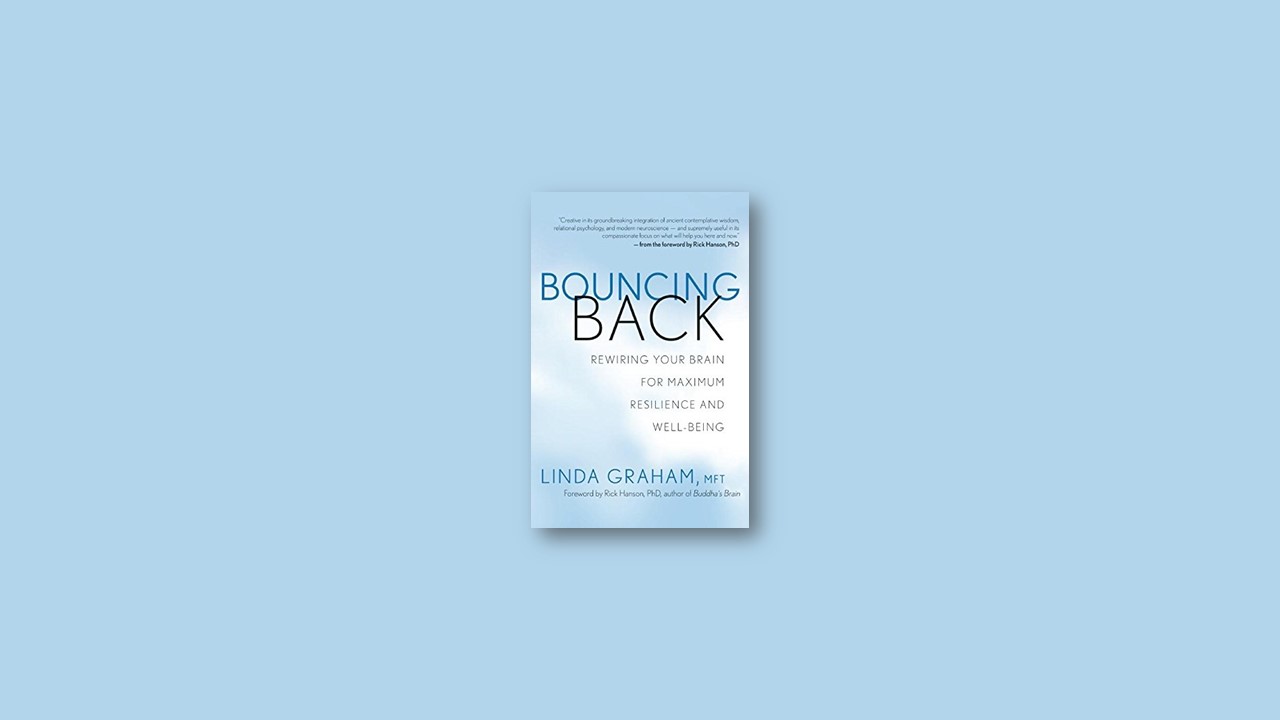How the Brain’s Strategies of Resilience Become Wired In
- Interactions with others — such as experiencing empathic, responsive parenting — instill a sense of safety and trust, a sense of importance and being loved, and a sense of competence and mastery that become your brain’s first templates of resilience and serve as lifelong buffers from stress and trauma.
- That sense of security supports healthy self-development, self-regulation, self-confidence, and the maturing of the prefrontal cortex of the brain. The prefrontal cortex coordinates other brain structures and circuits to use conditioning and neuroplasticity to learn and stabilize patterns of resilience and to unlearn or rewire them later when necessary.
How the Wiring In of Resilience Can Go Awry
Our innate capacities for resilience are vulnerable to being derailed by evolutionary realities.
- Our earliest strategies for resilience are developed in interactions with other brains. Depending on how those early interactions go, we may encode coping strategies that are unstable (a neural swamp) or inflexible (neural cement).
- Repeated experiences reinforce the conditioning of these patterns in the human brain: we create good or bad habits of coping that, if reinforced without awareness, become harder and harder to change.
- The brain’s innate negativity bias helps us survive as individuals and as a species, but it can skew our response to stressors toward the negative as we grow older.
- Trauma overwhelms our coping strategies and can even overwhelm our capacities to recover.
Here’s the good news:
- Although early experiences do much of the initial wiring of our brains, later experiences, especially healthy relational ones, can rewire our brains to allow us to cope differently and more resiliently.
- The changes we make in our behaviors can last because we’re creating new brain structures and circuits to support them. Even learning how to rewire our brains rewires our brains as we go along.
- New experiences can strengthen the functioning of the prefrontal cortex itself. The more skillful the prefrontal cortex is — the more easily it integrates information from other parts of the brain to help us make wise decisions — the more resilient we can become.
Using Mindfulness to Foster Self-Awareness and Flexible Responses
Because of our brain’s innate neuroplasticity, we can choose which new experiences we want to use to rewire our brains for resilience; we can become skillful at self-directed neuroplasticity.
- Mindfulness — steady, nonjudgmental awareness and acceptance of experience — is one of the most powerful tools for brain change known to science. By strengthening the functioning of the prefrontal cortex and related structures, mindfulness leads to the self-awareness and shifts in perspective that allow the brain to remain flexible in its response to triggers and trauma, more easily rewiring itself for resilience.
- Mindfulness allows us to perceive directly that it is the nature of all experience to change, including the constellations of thoughts, feelings, and behaviors we have come to identify as “me” or “I.” With practice, we can loosen our grip on the “stuff” of our “self” and relax directly into an open, spacious experience of our true self and the wisdom of our true nature, allowing our patterns of self to be more easily rewired.
- The reflective investigation of mindfulness practice dovetails easily with the conscious examination of the observing ego of Western psychology, helping the brain integrate a sense of genuine wholeness that is key to resilience.
Using Empathy to Create Connections and Self-Acceptance
Empathy is a powerful tool of brain change and one that helps create a safe environment in which to undertake that change. Practices of resonance, attunement, empathy, compassion, and self-acceptance activate the resonance circuit in the brain, which strengthens the prefrontal cortex, enabling it to rewire strategies for coping with people and life events.
- Resonance allows us to pick up the “vibe” of other people.
- Attunement allows us to feel our way into another person’s experience and feel their awareness of ours in turn.
- Empathy helps us share an understanding of an experience, ours or another’s.
- Compassion allows us to stay open and engaged with experience so that the brain can rewire itself, even when that experience is difficult.
- Self-acceptance allows us to come to terms with experience, learn from it, and create new patterns of response.
Together, mindfulness and empathy allow us to experience the true nature or wiser self that can guide our actions. A synergy of mindfulness and empathy strengthens the functioning of the prefrontal cortex to rewire our brains for both stability and flexibility.
Five Additional Practices That Accelerate Brain Change
The five practices — cultivation of presence, intention, perseverance, refuges, and resources — are all helpful in any process of personal growth and self-transformation.
- Presence — showing up and engaging with experience — is a gateway to neural receptivity that helps the brain more easily learn and rewire.
- Intention inclines the mind toward resilient behaviors and strengthens the neural circuitry that supports them.
- Perseverance creates new neural structure through repetition, making it easier for desired brain change to last.
- Refuges create the safety and trust that support brain change and growth.
- Resources generate the strength, energy, steadiness, and balance we need for adaptive coping.
These practices are essential for rewiring your brain for resilience. Along with mindful empathy, which helps you see clearly, the practice of presence brings you into a state of calm. When you connect to refuges and resources, you create more options for coping. When you set intentions to cultivate practical skills of resilience, and when you persevere in those intentions, you become more competent. All of these practices, and the reward of more resilient coping that comes from them, boost your courage to keep going.
How Bonding and Belonging Nourish Resilience
- We can use the power of interactions with a true other to strengthen the prefrontal cortex and recover a sense of our true self and a secure inner base of resilience.
- You can repeat the exercises as often as you wish to enhance your capacities for deep listening, relational engagement, loving kindness, honoring the nobility in others, taking in the goodness that others see in you, and befriending yourself.
- All of these exercises strengthen the resonance circuit in your brain, which creates a sense of safety and trust in relationships, relationships that you can use in turn to increase your resilience.
Creating Inner Security and Confidence
To choose new experiences that help you strengthen your inner base of resilience in order to fully realize your potential and skillfully navigate your world.
- Taking in the unconditional love and acceptance of others helps our neural circuitry encode both the calm and the courage that are part of our internal secure base. We feel confident exploring new relationships, new experiences, and new ways of taking care of business in the world.
- Taking in the good connects us to the resources of our inner goodness, inner strength, and inner competence that equip us to face difficult situations.
- Listening to our wiser self helps us see options and choices more clearly as we contemplate big decisions.
- Knowing how to rewire old, painful memories stops them from plaguing us and helps us feel competent and confident about continuing to rewire our brains for resilience.
Moving Resilience beyond the Personal Self
The following model is taught all over the world to cultivate qualities and behaviors that particularly support resilience. In this model, we move through four phases of competence and awareness of that competence, from a complete lack of the competence or even knowledge of our need for it to full knowledge and mastery of it.
- Unconscious incompetence. We don’t know how to do something, and we don’t even know that we don’t know. We’re innocent or clueless; the brain is in homeostatis.
- Conscious incompetence. This is an “Oh shit!” circuit. We don’t know how to do something, and we suddenly realize we don’t know. If ever our resilience is going to derail, it’s right here. Old patterns of fear of failure, passivity, or shame may resurface. We can get past any denial or blocks to learning by reframing this step as the beginning of gaining competence. When we harness the innate drive for mastery — to recover any missing competencies and to learn new skills — we can be proud of taking steps to recover our resilience.
- Conscious competence. This is the phase in which we know how to do something, and we know that we know. Through all of our new experiences, resources, tools, and techniques, we are learning. New patterns of response are being rewired in the brain. We are becoming masterful and competent. We spend a lot of our adult lives in this phase, of course. We are confident that we know, in spite of old, negative stories about ourselves that might linger. We are deepening and solidifying the circuits of the competency and of learning.
- Unconscious competence. Once we know how to do something well and practice doing it again and again, the new skill becomes wired into our implicit procedural memory. Our wise effort becomes increasingly effortless. It’s like learning to ride a bicycle: we don’t even have to think about it anymore.
As an irrigator guides water to his fields, as an archer aims an arrow, as a carpenter carves wood, the wise shape their lives. — BUDDHA


